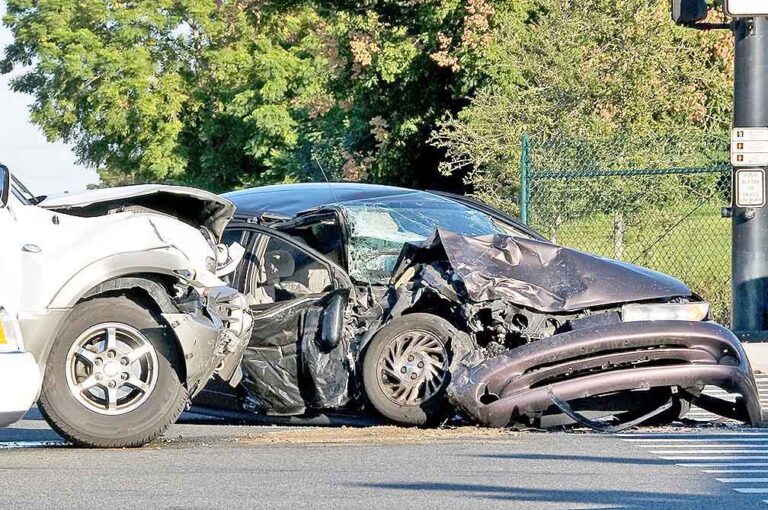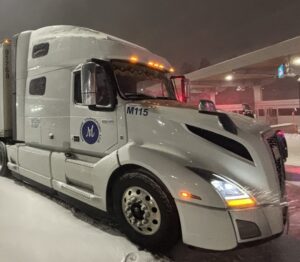SALT LAKE CITY — Several states are reporting sharp rises in fatal roadway accidents over the past year as officials nationwide are trying to come up with ways to curb highway deaths.
The statistics reported did not include what types of vehicles people were killed in, such as sedans, SUVs, 18-wheelers, etc.
However, in June 2021, the National Highway Traffic Safety Administration reported that traffic deaths involving large trucks fell by 2%.
Speed and distracted driving were the most blamed reasons for states’ rising highway fatality rates.
Last year, 672 people were killed on Colorado roadways – the most deaths since 2002. And that number is expected to increase as the Colorado Department of Transportation continues to receive additional crash reports. This marks a 50% increase from the 447 fatalities recorded in 2011.
In Utah, 320 people died on highways in 2201, according to the Utah Department of Transportation (UDOT) and Utah Highway Patrol (UHP).
“These are not just statistics,” UHP Colonel Michael Rapich told the Salt Lake Tribune. “These are horrible, tragic events that involve violent tragedy.”
As 2021 ended, Minnesota recorded its most traffic fatalities in 14 years.
The Minnesota Department of Public Safety says 497 people died on that state’s roads in 2021. That’s the highest number since 2007 when there were 510 traffic deaths.
A record number of traffic-related deaths were reported in Oregon last year. As of Nov. 30, 2021, the Portland Police Bureau said there were 62 fatal crashes and 26 pedestrian fatalities in Portland, which is the highest number of roadway crashes recorded since 1990 with 63 deaths.
State troopers, including Utah’s Rapich, are there to witness these deaths, witness the gruesome injuries, tell families that a loved one didn’t arrive home safely. They also know that more than 90% of these crashes would be prevented, Rapich said, if the drivers weren’t speeding, weren’t intoxicated, weren’t distracted with their phones.
“They feel strongly about it, and they take it personally when they see – whether it be an impaired driver or an aggressive driver or distracted driving or all these behaviors that are absolutely preventable and people should know better,” Rapich said. “That’s impactful with our troopers.”
In Utah, speeding vehicles and impaired drivers caused the largest segment of deaths, 81 and 138 respectively.
Seventy-four people who died were not wearing seatbelts. About 12% of Utahns don’t wear seatbelts, Braceras said, even though they are the “simplest, easiest” way to reduce serious injuries or death.
Up more than 15% since 2020, last year saw the highest number of deaths in nearly two decades when 329 people died in 2002, according to UDOT and UHP data released Wednesday.
“The numbers are absolutely devastating to people here in our organization and to our partners at Highway Patrol who work so hard to get to zero fatalities,” UDOT director Carlos Braceras said.
Drivers don’t often consider that every decision made on the road can have consequences, Braceras said. Those decisions could save a life or take one.
When you’re driving a car, that is probably the most dangerous thing anyone will ever do,” Braceras said.
Fatalities declined from 2016 to 2019 but began to rise in 2020 when 276 people died.
“It’s discouraging,” Utah Safety Council president John Wojciechowski said. “Just when you think you’re making headway, then we have a year like this, and it’s tough.”
Braceras points at the uncertainties of the pandemic as a potential reason behind the numbers.
“People over the last two years have been dealing with stuff they’ve never dealt with before,” Braceras said. “I don’t have data behind it, but we believe all of these stresses are at least partly if not completely behind these changes.”
Most of those killed were people in vehicles, but 44 pedestrians, 37 motorcyclists and six bicyclists also died on the roads.
Zero fatalities isn’t just a mantra for road safety advocates, it’s a real goal for UDOT, UHP and the Utah Safety Council. Reaching that goal requires each person take responsibility for driving safely, Braceras said.
The Zero Fatalities program, a partnership of various agencies and organizations, lays out several methods of reducing traffic deaths.
Updated laws, including the graduated licensing for teens driving and the reduced legal limit for blood alcohol content (BAC) to 0.05, have helped with safety on the roads, Rapich said, but more still needs to be done to encourage safe driving.
Zero Fatalities will launch a year-long campaign this month focused on the beauty of Utah and the fun to be had around the state so long as you arrive safely, program manager Kristen Hoschouer said.
The Destinations campaign will highlight different seasonal activities, such as skiing in winter or summer rodeos, on social media, billboards and television ads, Hoschouer said.
“Those are brought to us by driving safely,” Hoschouer said, “that’s the only way we can get to those beautiful destinations.”
This campaign will be different from some more traditional types of campaigns that focused on fear, Hoschouer said. There will still be efforts and posts focused on the danger of driving and how decisions by individual drivers affect others, but Hoschouer said they wanted to take a combination of approaches.
“We want to have a balance of the type of messaging that we’re going to do,” Hoschouer said.
The council also offers classes for safe driving to highlight the effects each driver can have on the road. Most participants in the classes are directed there after receiving a speeding ticket or other citation, but they are open to the public for $40 to $50, depending on the class.
Reaching zero is difficult, but even just one death affects the lives of many more, council vice president Brandee Crockett said.
“It’s just heartbreaking to have people go through that,” Crockett said. “Anything you could do to save one life, let alone all the others, I think is just so important.”
The Associated Press contributed to this report.
The Trucker News Staff produces engaging content for not only TheTrucker.com, but also The Trucker Newspaper, which has been serving the trucking industry for more than 30 years. With a focus on drivers, the Trucker News Staff aims to provide relevant, objective content pertaining to the trucking segment of the transportation industry. The Trucker News Staff is based in Little Rock, Arkansas.
















Very simple solution. Enforce the speed limits especially in construction zones.